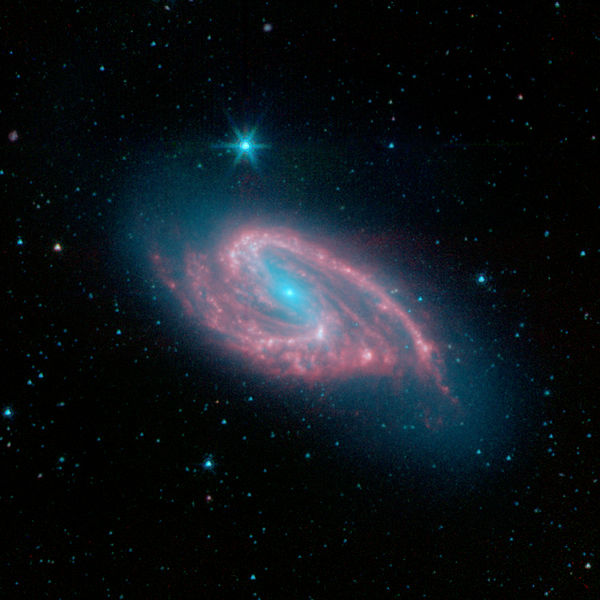Professor makes findings on disc galaxies

Spiral galaxy NGC 3627. Spiral galaxies are the most common type of disc galaxies
September 23, 2013
A fundamental question about the evolution of galaxies is the focus of one ISU professor’s work.
Curtis Struck, professor of physics and astronomy, teamed up with Bruce Elmegreen, researcher at IBM, to ask: “How do young disc galaxies transform from irregular, clumpy discs of gas to the smooth appearance of the older galaxies we see today?”
When galaxies form, they begin as large clouds of gas that are slightly denser than their surroundings. Soon, the gas collapses under its own gravity, combining into stars, which orbit around a central point.
These new galaxies have an irregular, clumpy appearance. They lack the smooth profile of older galaxies, which fade in brightness exponentially from the center to the edges. This is due to the large clouds of gas or dust, the fact that most stars in young galaxies have circular orbits and to the presence of dark matter.
“We wondered whether this was a general kind of scattering phenomenon, not unique to one kind of thing doing the scattering,” Struck said. “And if so, could the clumps that form in early galaxies play a role in their own destruction?”
Struck and Elmegreen discovered that this was exactly the case.
Large objects with high gravity affect the orbits of smaller stars. They slowly shift them into elliptical orbits at various distances from the galaxy’s center, smoothing out its appearance.
Before the two focused their research on this area of galaxy formation, theories abounded about how galaxies make this transition. Most only provided explanations for one type of galaxy, but Struck and Elmegreen’s data explains how this process occurs in every galaxy.
Steven Kawaler, professor of physics and astronomy, said the two’s results are very significant.
“It’s been a mystery for 40 something years now,” Kawaler said. “But through the numeric they saw this process unfold, going from very complex to very simple over time and that gave them the tools to understand the physics.”
Struck said one of the most fascinating aspects of astrophysics is the ability to literally see back in time to the early days of the universe.
Although light travels extraordinarily fast, it is no match for the vast reaches of space. When telescopes such as the Hubble focus on distant stars and galaxies, they see light that has been traveling across the universe for billions of years.
This allows scientists to compare the clumpy formation of young galaxies to the smooth profiles of older ones. However, due to the time period required for a galaxy to evolve from one stage to the next, it is impossible to simply watch galaxies to see what caused the change.
To solve this problem, Struck and Elmegreen used computers to model various types of galaxies. Because they were focusing on a particular process, they could use relatively simple desktop computers. This is a common method in astronomy, because trying to observe a galaxy evolve would take billions of years.
In the future, Struck and Elmegreen plan to add more detail and depth to their computer models. For now, however, the results have wide implications.
“When you look at galaxies on that kind of a scale you can’t ignore the impact of things like dark matter,” Kawaler said. “Watching this pattern unfold within the broader context of dark matter’s influence on galaxy evolution is important for us to figure out the major back piece of the universe. … It’s a mystery of our galaxy that seems to have finally yielded, but at the same time it gives us extra information on the components of the universe as a whole, and how they interact.”






